Eseries-branded devices have always been dubbed as enterprise solutions aimed at least at the audience of business-users, which has allowed the company not to sweat over the design too much, or beat its head about positioning. At the beginning, Eseries was consistently and aggressively suggesting to us that a camera module embedded in a handset for this particular audience is “evil” and, among other things, in some places taking snaps is prohibited. The arguments, were, to say the least, pretty weak, but being spread by Nokia’s representatives they actually affected the market, thus in some areas where handsets got placed outside the law, however people were paying a little attention to those restrictions. I truly loved the story that happened a year ago in the head quarters of Lukoil – they placed special lockers for phones of the staff over there. The idea actually had seemed to have worked out, at least for the first few days, but by the end of the week the security, which had been supporting the whole thing, went crazy because of the ring tones coming from the lockers. Basically, that order was illogical in the first place and got cancelled shortly after, as leaking information with the help of other portable storage devices is much easier than snapping it with a handset’s camera.
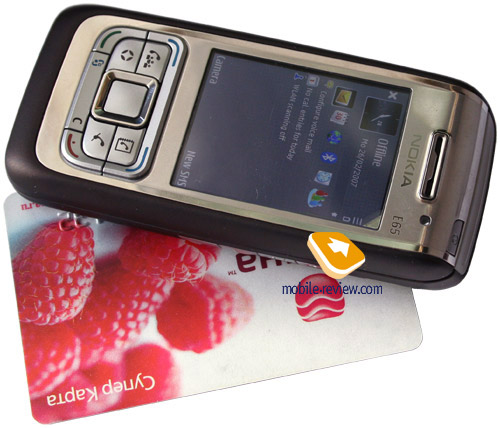
Having infected consumers’ minds with the idea of “maleficence” of camera, over at Enterprise Solutions they had a clear understanding of the fact that doing so allows only postponing the moment when blurred positioning of many Eseries devices would have become evident to many. Undoubtedly, communicators and QWERTY-armed solutions will always walk a different path, however they occupy a tiny share in sales and can be seamlessly overlooked.
For conventional candy-bars in Eseries, the main highlight could be the software, specifically support for Microsoft Office documents editing via native suite of applications. And we were surprised to a great extent, when we found out that the software kit embedded in Eseries performs notably better than Microsoft’s very own apps for Windows Mobile. You can learn more about this and some more features of Eseries software in a dedicated article.
In current generation of Eseries they have forgone the native application in favor of the current default, as many see it, Quick Office (pre-installed application). The cutting- dge of VoIP has gone as well, since many new smartphones coming from Nseries and the S60 camp in general have acquired this feature. Initially claimed support for certain enterprise VoIP-applications in Eseries has died on the vine. For example, Cisco CallManager, which you can learn more about here, still doesn’t work properly. Over at Nokia they assure us that with some voodoo, precise setup of applications and loads of time, one could make this combination work (not for all firmware versions and “dated” devices). Since late October, 2006 such solution has been around, even though it leaves much to be desired, but this is something we’ve come to expect from all new technologies.
So what do we have left from the highlights of Eseries that could be heavily hyped and then grasped by consumers? Hmm… Maybe names, or, better to say, indexes of the devices? All in all, we can rightfully state that the positioning of Nokia-branded devices are suffering positioning catastrophe, and all this started at the moment when stand-alone divisions took this process in their own hands. The goal of a specific unit is not to make the entire company happy – on the contrary it sets out to succeed on its own front. Getting one and the same raw material (S60 platform) different divisions come up with own products, each with unique positioning. And every solution is ought to secure certain level of sales, otherwise it is rated as not-particularly-successfully and the work of a division will be valued accordingly.
Now let us portray a typical consumer who wants to buy a handset. It is a man who has got a basic need in making calls, enjoying good battery life, display, extended capabilities of the phonebook etc. The suite of secondary features, for example camera, music department, may vary. But the fundamentals are always constituted by those basic characteristics. So, it turns out that all three of Nokia’s divisions, in various ways, aim at the same audience and compete against each other for their attention. Rivalry in this very case gets to be not a very “healthy” effect. For example, over at Nokia Multimedia they are not really into Nokia Mobile Phones products, considering them as second to their own “multimedia computers”.
Incidentally, have you ever seen a man, that has nothing to do with this company that would use “multimedia computer”, referring to Nokia Nseries? Personally, having such a wide circle of relations, I couldn’t find any. Wait I moment, I actually lied. I had a chance to sit in a plane next to a good-looking middle-aged man, who, after spotting me staring at his Nseries and looking at my “ordinary phone” (and failing to figure out its brand), told me how great it was to own a “multimedia computer”, like his, surpassing all conventional phones. It might sound surprising, but I managed to impress my neighbor by telling him where he worked and what he was doing for that company. I guessed right in both cases. This story can make a good joke:
- How can you know that someone works for Nokia Multimedia Division?
- Easy – he will call Nseries smartphone a “multimedia computer”.
Artificiality of division of products into various segments, dictation of own titles – all this leads to a mess in positioning. As the number of S60-powered products grows, the competition is getting tougher bother between each other and against the S40. A fine example of this trend is a smartphone going by the name of Nokia E65. The basic concept they initially armed it with was beautiful. It was essential to come up with a device for energetic people, who make loads of calls and communicate with great many of workmates. In course of the product development such positioning lost its ground – there were too many ordinary phones that acted as its counterparts to some extent, coming out in both Nseries range and line-up of ordinary phones. They only thing that were down to do was make an elegant move and change the positioning of the device. So, which segment will be most appropriate for a 400-Euro slider? Apparently, the niche of fashion phones.
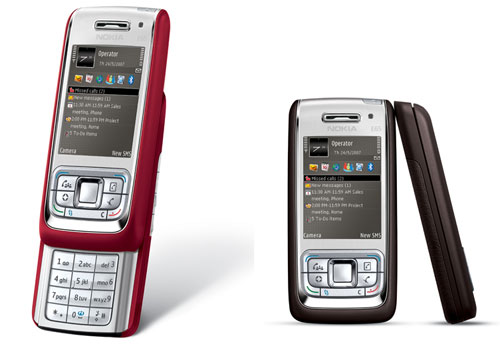
This slider belongs to “slim-is-in” category, being one of the company’s smallest slider-styled offerings, measuring up at 105x49x15.5 mm. While Nokia’s range doesn’t feature any counterparts to this solution, Samsung is delivering such device in March - Samsung i520v (S60 3.1, 101.7x50.5x17.9 mm). Overall these devices share some commonality – to make sure of that you just need to put them side by side. The Nokia-branded solutions look much more flashy, thanks to the display edging and patterned surface, good combination of silver and grey colors (the other color scheme is a typical pick for women – red).
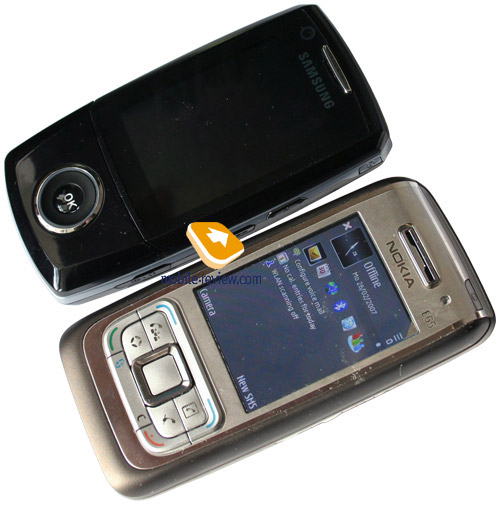
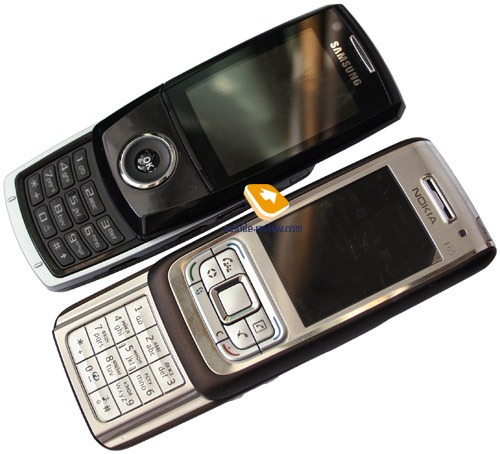
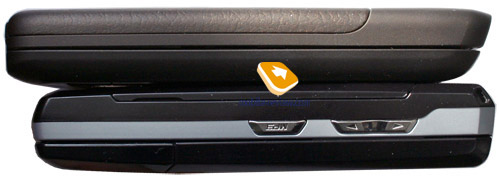
Have you ever tried to image a red-coated enterprise device? I find this pretty challenging, but the fact is – for the very first time Eseries sways towards the fashion segment. And these people had enough courage to say something about built-in camera? I don’t understand them at all.
Design-wise, the E65 is quite good – it positively differs from many sliders that Nokia released lately, just look at face-to-face pictures with Nokia N80, Nokia 6288 and Motorola Z6.
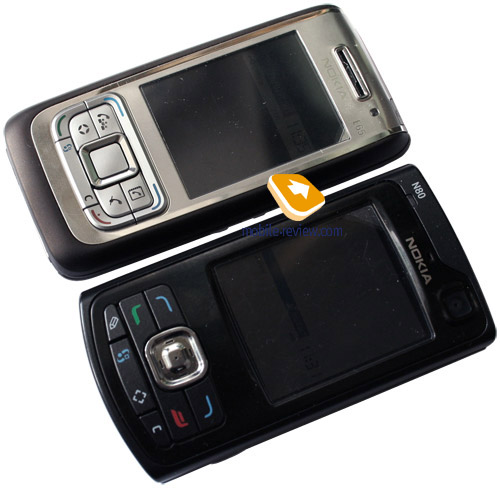
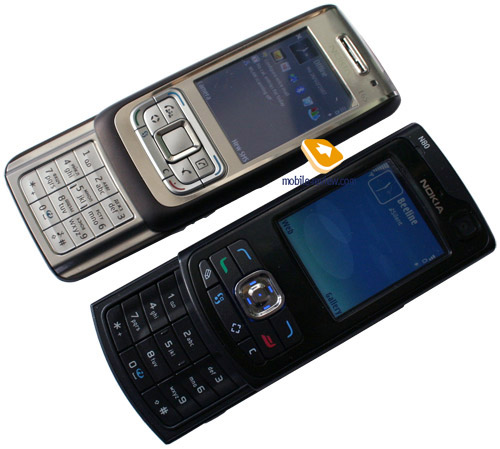
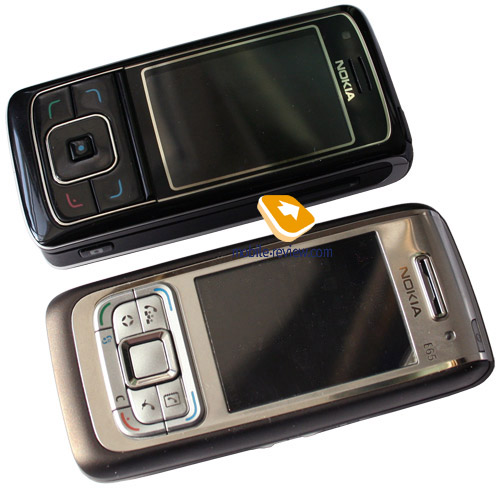
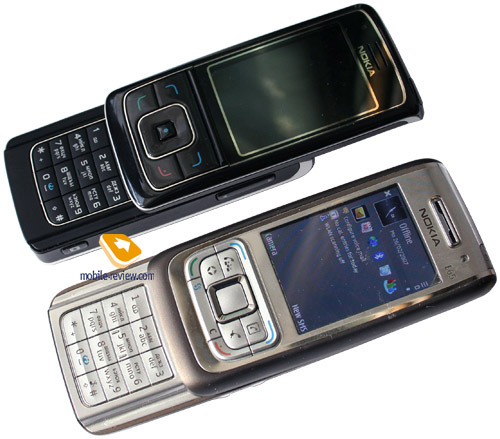
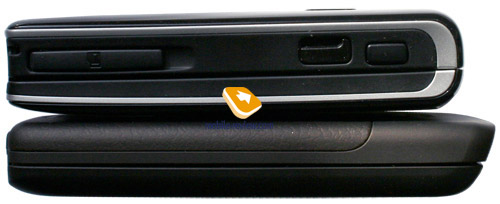
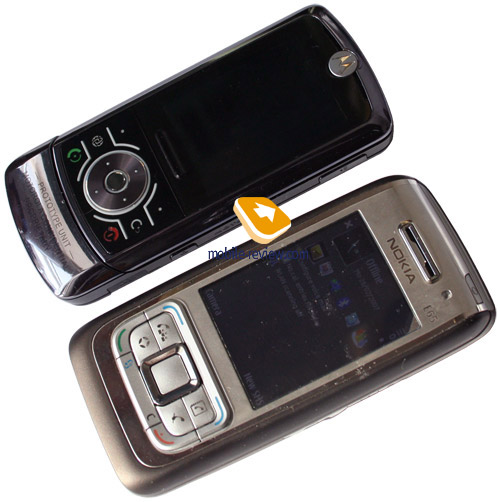
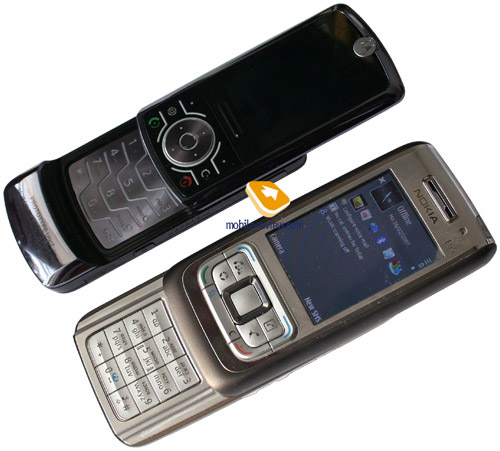
The handset weighs in at 115 grams and measures 137 mm long when zipped open, which makes for comfort. At the same time you can accept and make calls without sliding the E65 open.
The phone comes included with a velvety carrying pouch, which is astonishing.
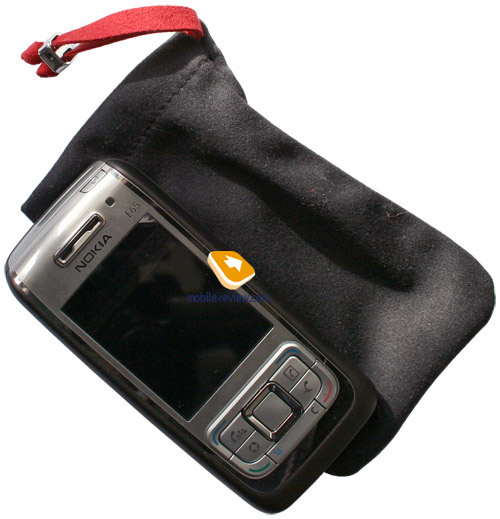
But the trim is not the only thing highlighting unconventional style of the E65 – turning the handset around reveals leather-like surface of the battery cover. The plastic quality is good, in some places the finishing is something between soft touch and standard plastic coating. However the surface proves to be prone to mechanical effects, specifically the area next to the “pencil” key wore off due to the phone being put in one pocket with keys once. At the same time, while not in such extreme conditions, the E65 won’t expose these scratches. The chassis is painted into the same color.
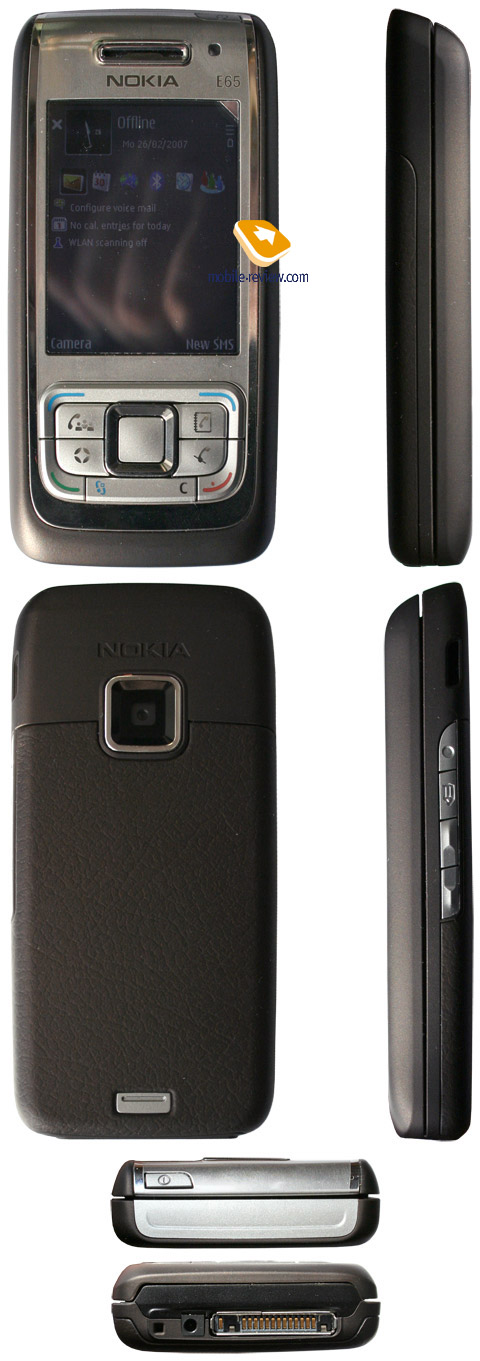
All in all the build quality is not something we can complain about – the halves don’t feel spongy, the device slides open and closed with ease, thanks to the spring-loaded slide mechanism. However, in three days it lost the smoothness of sliding action, it got a tad slower, with the addition of a clang, but we managed to find the explanations outright – the keypad is framed by a metallic inset, whose surface is patterned as well, in order to emphasize the texture of the material used. And the halves will always stick to this surface, and it gets scratched in no time. Well-visible abrasions emerge in four days of usage. Though it is not an issue from the mechanical point of view – the slider will remain good at zipping open and closed for a long while – this doesn’t add points to the E65’s looks. On the other hand, though, scratches can be noted only with the phone open.
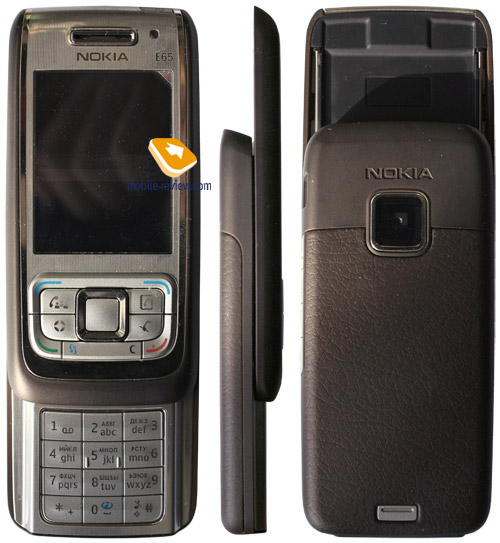
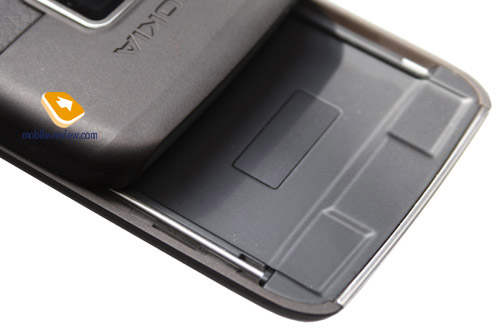
The handset utilizes QVGA display (240x320 pixels, 2.2 inches, 34x45 mm), capable of 16 mln. colors (TFT). Much like other Nokia’s offerings, theE65 comes installed with a mirror layer for the display, making its usage in the sun a bit more like a breeze, and keeping the picture perfectly legible, which is especially vital for navigation mode. Also the handset carries ambient light sensor, which adjusts backlighting level basing on current light conditions.
No comments:
Post a Comment